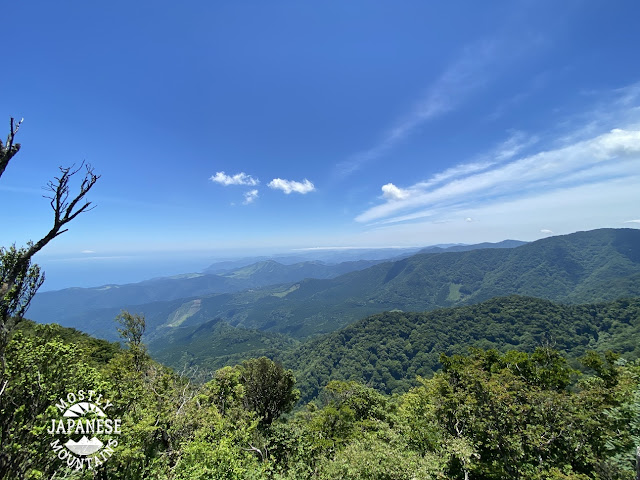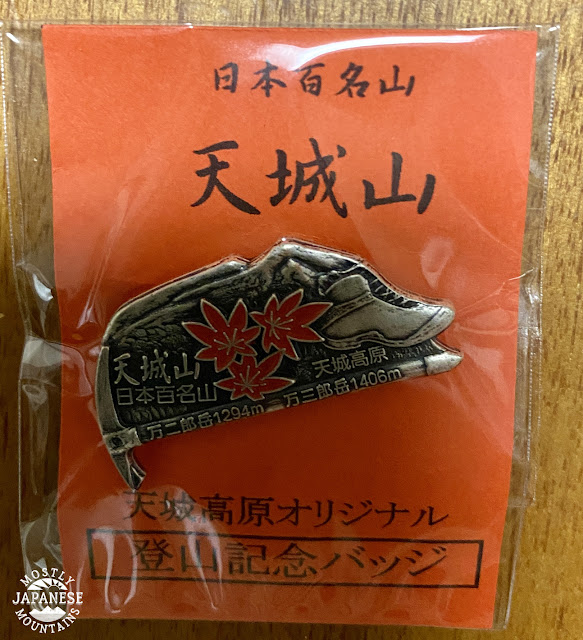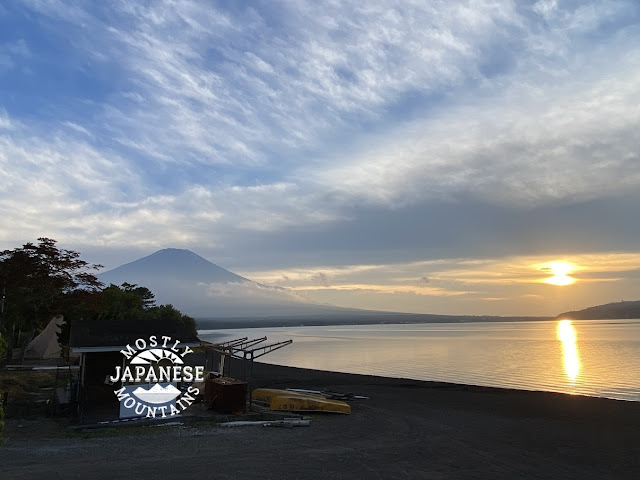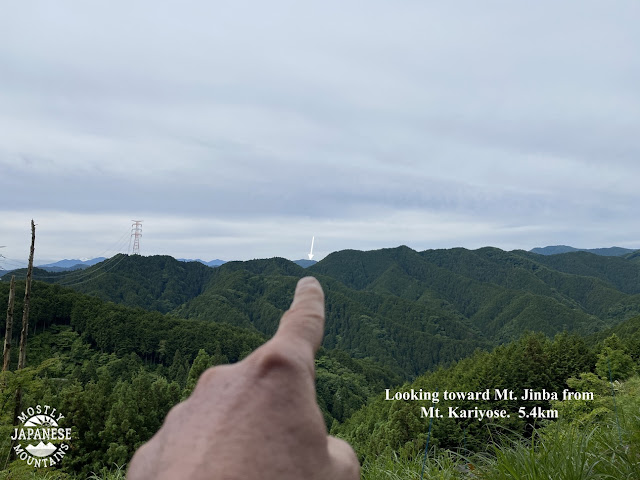I had Monday off this week. I decided on a trip that would allow me to make the best use of that long June day. I headed down to the Izu Peninsula, to Mt. Amagi, one of Japan's Famous 100 Mountains. (Mt. Amagi=天城--"Heaven Castle") It's a hike I've wanted to do for a while but have put off because of the distance. It's not a challenging hike and it's far so it's hard to justify the time and expense. The usual train/bus route costs over ¥5,500/about $45 and takes 4.5 to 5 hours each way. I opted to go on my scooter. That also takes a long time but would cost about ¥700 in gas. Despite the savings, the drive time had me worried. Googlemaps gave an estimate of between 3.5 and 6 hours each way. Assuming the longer estimate was correct, I could be looking at 12 hours crouching over my moped. Yikes.
I decided to roll the dice and take my chances. I got up at O dark thirty and left home an hour later at sunrise. (4:30 these days.) Even though it's far, the ride was worth it. The ride actually gave me the best views of the day. On the way I caught a glimpse of the top of Odawara Castle while passing through Odawara. The Izu coast around Atami and Ito were gorgeous. Coming home, I took the inland route which brought me under Fuji's gaze around Gotemba. I always wonder "Am I the only one who sees the giant eye on the top of Fuji?" I was able to enjoy dinner on the shore of Lake Yamanakako at sunset. That was beautiful.
These first several pictures are of the ride down. Izu is one giant playground. The ocean is beautiful, as you can see. There is surfing, fishing, boating--but also golfing, and hiking. Its hot springs are quite famous because it is a very active region geologically. It would be a nice place to spend a week or so if you had a suitcase full of money.
Here are the details of the hike:
Getting there: Whether coming by bus or by their own car, most people start hiking at the Amagi Juso Tozanguchi Bus Stop which is adjacent to the Amagi Kogen Golf Course. You can get there by bus (about 1 hour) from Ito Station. You can get to Ito Station from Tokyo on the Tokaido Shinkansen. There are cheaper local trains but they will take longer than the shinkansen.
Facilities: At the bus stop, there is a free parking lot for hikers equipped with public toilets and water. The only food nearby I saw was protein bars in the clubhouse. There is a vending machine for drinks there, too. Water is ¥210!
The hike: It's not very strenuous. There are actually several peaks that comprise Mt. Amagi. There is Banzaburo , Banjiro and Togasa. Most people just do Banzaburo and Banjiro. They are accessible on a loop trail that passes near the golf course. One side of the loop is the shakunage (シャクナゲ=rhododendron) trail. I'm not really a fan of hiking near rhodos, but I'm sure it floats some people's boats.
The loop takes about 3~5 hours. It's about 8km. The rise in elevation isn't that great. Maybe 700 meters?
I did that loop and also added in Mt. Kotake. It wasn't that far and I'm always happy to bag another peak. After that, I also added Mt. Togasa to my hike. Most people ignore it because it is about a mile or so down the road from the golf course to its trailhead. I am glad I did it. There is a wireless relay station at the top so there is a mostly-paved road all the way to the top. Also, I got my best views of the day from there.
My day ended up being 16.3 km which translates to just over 10 miles in American. I went up and down 1,140 meters in elevation.
The parking lot/bus stop I mentioned is annotated as the Amagi Kogen Golf Course. I didn't park there. I parked just above the uppermost fairway on the map below. You can see a little blue triangle there.
Before I get to this day's hike, here is a picture or two I took of the area from Mt. Fuji.
These are from the trail:
Sagami Bay is on the left side of the picture.

. . . and looking back.
These are from Mt. Togasa. Unfortunately, the bay wasn't so visible by this time of day because of the haze. It was hot. 36 degrees Celsius at sea level.
More on this later.
That Mt. Omuro looks cool!
Happy puppies.
Oh, I should mention the badge. This is kind of like a participation trophy. (That I buy for myself. How pathetic.) Many of the popular mountains produce a commemorative pin that you can buy. I try to buy one every time I climb one of the 100 Famous Mountains. I have a big banner that lists all of the mountains and I attach the badge to the banner each time I get a new one. I'm such a geek caveman.
This is the one I got yesterday.
Some thoughts about this trip. I'm glad I went. I am not a fan of Nike, but I do love their slogan. As with most of these things I waiver about doing, just doing it has brought results. I've never regretted going for a run in the rain or taking on a mountain that pushes my limits. (I'm not above turning back when things are dangerous though!)
I did this hike during an off-period. The best months to climb Amagi are May, early June, and October. Those periods have the best flowers, the best views of Fuji and the ocean and/or fall foliage.
They also have crowds. There are trade-offs. On my return, it was really cool to be the only person on Lake Yamanaka. On the other hand, none of the restaurants were open and I almost ran out of gas because the one gas station on my way was closed. (Actually, they had just locked the door--5 minutes early--when I pulled up. But that post is reserved for a review on googlemaps!)
That's pretty much it--except for the ride home. I got some great views of Fuji on the way. When all was said and done, I rode about 300km and the trip took me just over 16 hours.
These are from Lake Yamanaka
Drop by my cave anytime.



















































